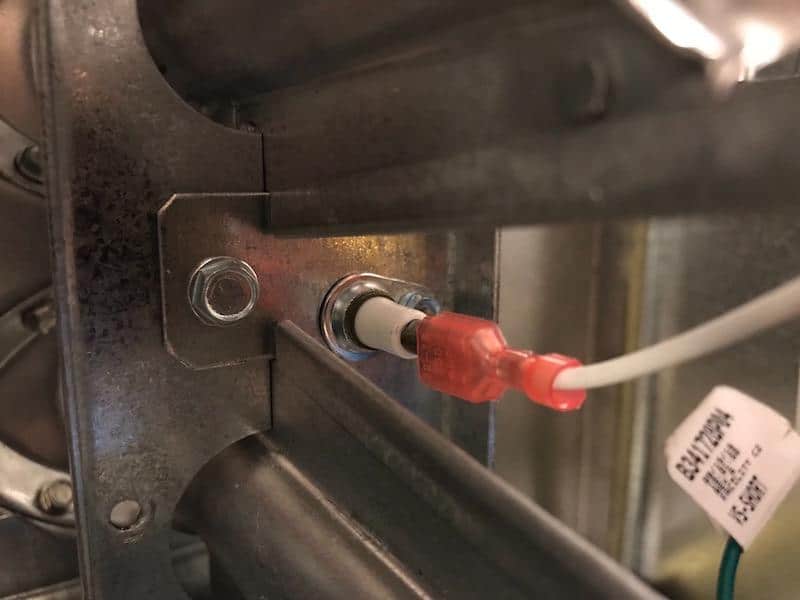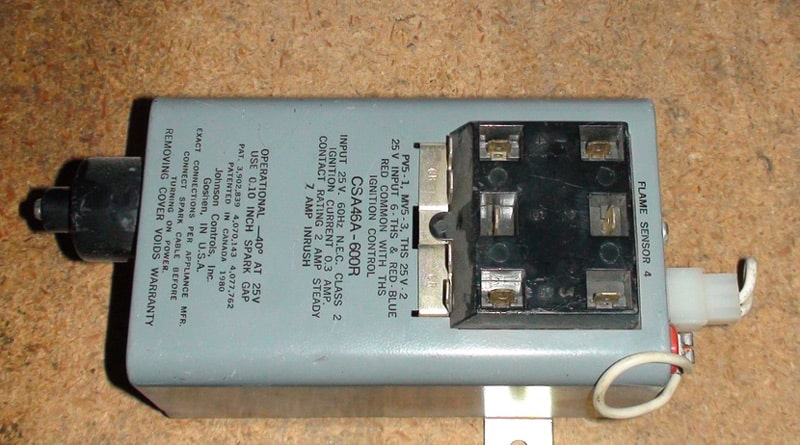We've independently reviewed this article to make sure it's as accurate as we can make it.
To find out more about our article creation and review process, check out our editorial guidelines.
Stuck trying to figure out why your furnace won’t stay lit?
Unfortunately, this is a known issue and can be super frustrating when it happens. After all, the whole point of putting your furnace on is that it’s cold outside, and you need to warm your home.
If your furnace is refusing to stay lit, chances are it’s overheating due to a dirty filter or airflow issues. You might also have a faulty flame sensor, low gas pressure, or a damaged limit switch and ignition control.
Don’t worry, though. In this article, you’ll learn different ways to solve these issues.
Keep reading to forget all about this problem!
How the Ignition System on Your Furnace Works
First of all, let’s discuss how the ignition system on your furnace works.
There may be unique features on any given furnace, but the following steps will be fairly common to any gas-fueled furnace. Seeing the process might help you understand how and where things can go wrong.
- Your thermostat relays a call for heat
- A draft inducer fan, which is located near the heat exchanger in your furnace, turns on and provides air circulation in the combustion chamber.
- The gas valve opens to provide fuel to the pilot burner.
- The resulting spark lights the pilot burner.
- A flame sensor confirms the pilot is lit and that fire is present.
- The pilot light then lights the main burners.
Why Your Furnace Won’t Stay Lit
Typically, a furnace should cycle on and off about every 10 to 15 minutes. So if yours keeps shutting off within just a few minutes, you could be facing a wide range of problems.
The cause of your furnace not staying lit is related to when the flame goes out.
Whatever the case may be, please keep reading to learn how to get rid of the issue.
#1 Faulty or Dirty Flame Sensor
If your flame sensor isn’t working correctly, or it’s dirty, it could be telling your furnace that the gas is lit. Even though the pilot light has gone out.

Solution. If you’re handy, you should be able to diagnose this yourself. Here’s a step-by-step guide.
- Turn off the power to your furnace
- Shut off the gas valve
- Find and remove the flame sensor mounting screw
- Remove the flame sensor and inspect it, looking for cracks and or corrosion
- If there are any cracks in the porcelain insulation or if pieces are missing, the sensor must be replaced
- If the sensor simply has some corrosion or soot on it, try cleaning it and see if that solves your issue. One trick is to clean it using a dollar bill (yes, really!) as some say that sandpaper could damage the flame sensor.
Check out the following video on how to remove and clean your flame sensor.
#2 Flame Sensor Rod Needs to Be Repositioned
The sensor is simply a thin metal rod. Some of them are L-shaped and some of them are straight, and they typically range from 2 to 4 inches (ca. 10 cm) long. Regardless, they need to be positioned in the flame to work properly.
Solution. If your furnace won’t stay lit, reposition the flame sensor rod so that it will be covered in flame.
#3 Faulty Ignition Control
If your furnace is still refusing to stay lit, chances are the ignition control is damaged.
This is a small electronic board that controls the ignition sequence.
Solution. If you have a faulty ignition board, you’ll need to have your furnace serviced by an HVAC professional.

#4 Low Pressure
If your furnace is lacking the required pressure, its efficiency will drop. And it may be so bad that there’s not enough gas to light your pilot or keep it lit.
Please proceed with caution on this one. If things aren’t obvious or you’re not confident – it’s probably best to call in a professional.
Solution. There should be a pressure adjustment screw located on the line close to your furnace. Adjust the screw clockwise to increase gas pressure or counterclockwise to decrease the pressure. If you have a two-stage furnace, be sure to make adjustments to both low-fire and high-fire settings.
The second set of circumstances is when your burner does ignite but then goes out within a few minutes. Although your blower motor continues to run, your pilot and burners are no longer lit.
#5 Airflow issues
You should try the above fixes for your furnace if it doesn’t light correctly.
However, if your burners do light but then shut off within a few minutes, your furnace may be overheating.
Yes, your furnace should be hot, but there are temperatures that it must remain in.
Your furnace has a limit switch that will shut it down if the heat exchanger becomes too hot. This can happen due to dirty filters or blocked supply and return vents.
Restricted airflow is often the number one cause for a furnace to overheat.
Solution. If your furnace won’t stay lit because it’s overheating, please change or clean your filter and make sure there’s sufficient airflow through your ductwork. Having said that, if your furnace is still overheating, you need to call a professional.
#6 Control Board Issues
Lastly, the furnace could be suffering from a bad control board. This is what controls the operation of the separate parts of the furnace.
Solution. Generally for this one, it’s best to call in a pro. Diagnosing this alone can be difficult, so if you’d gone through our other tips we suggest calling out some help!
Conclusion
There are different reasons that could explain why your furnace is refusing to stay lit.
In many of these cases, it’s something you can fix yourself, however, as indicated, there may be some circumstances where calling an HVAC professional is advised.
Hopefully, this information has helped you in finding and resolving the problem with your furnace.
Thank you for reading! If this article has helped you, please check out our related posts below – and consider signing up to our email list.







